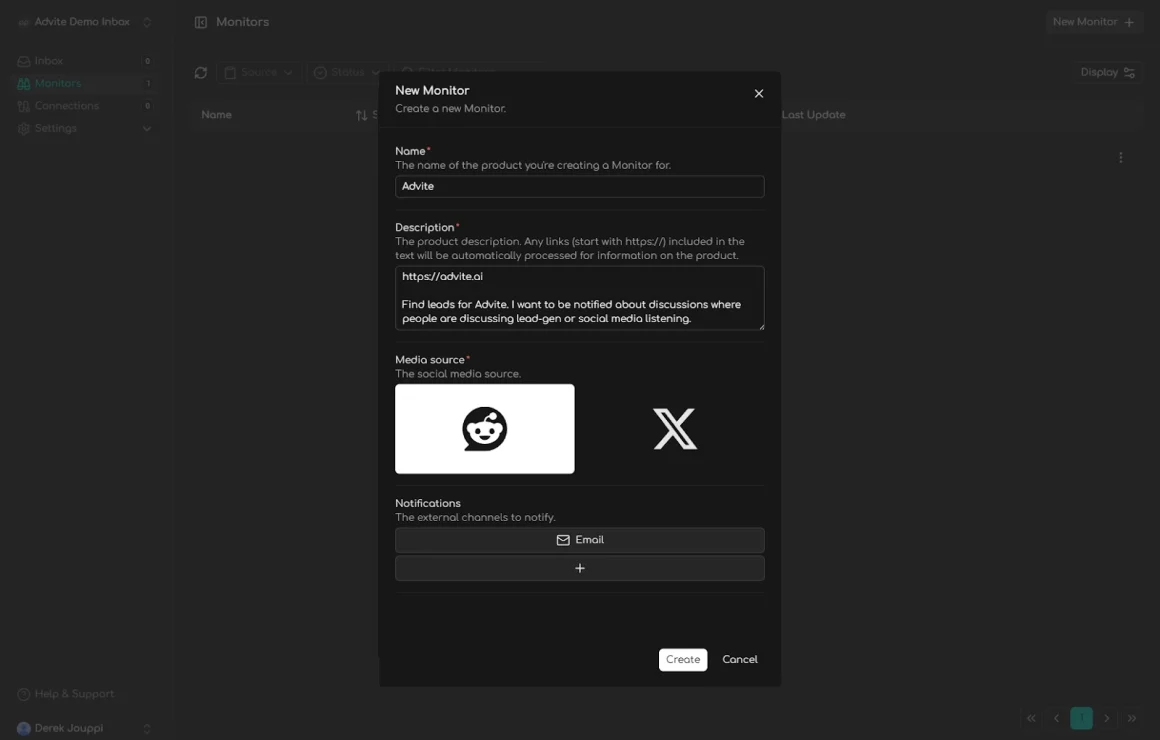Written by Derek Jouppi
Earlier this year a DTC brand sent me their media plan. $1M for FY. 8 channels. 2 agencies. 31 variations of the same hero video. In the same week their closest competitor broke Shopify because a summer intern dropped a few comments on a Reddit thread that exploded overnight.
The paid campaign returned a blended ROAS of around 1.4. The intern’s comment, plus a few follow-ups, pulled $46K in net new sales and drove a few keywords to the top of Google’s organic results for almost a week. So what was the cost of this comment marketing stunt? Two hours of a student’s time and a pizza. Yep.
Social commerce revenue in the United States hit $53.1 billion in 2023, up more than 34%. That growth is being driven by conversation, not banners. 64% of U.S. internet users say they discover brands on social platforms, and 70% admit they open those apps when they need buying inspiration. The path to revenue is no longer a straight line through your Google Ads account. It’s a messy knot of comments, DMs, reposts, reviews, and memes on X/Twitter.
Your million-dollar budget is fighting a battle it cannot win. Here’s why, what to do about it, and how to prove it to a CFO who still thinks paid reach is the safest bet.
Why the traditional digital marketing machine is cracking
The paid playbook used to work because the math was predictable. Buy a click, convert a user, retarget until they give in. That rhythm broke the moment ad inventory ballooned, privacy walls went up, GDPR, CCPA, and the feed turned into a slot machine of “sponsored” labels.
- Rising acquisition costs. Facebook CPMs climbed over 30% last year. Google is heading the same way. When every bidder in your category plays the same auction, price is the only dial left, and someone always has deeper pockets.
- Attribution decay. Apple shredded third-party cookies. Google will finish the job. The multi-touch model that once justified your spend is now riddled with blind spots. I call it a marketing MRI with the magnets switched off. The picture looks sharp, but it’s empty inside.
- Consumer fatigue. People scroll past ads. Authenticity is the new signal. 60% of shoppers rank user-generated content as the most believable form of marketing, and 84% say they trust a campaign more if it features genuine customer voices.
- The dark funnel. A good chunk of conversions pulls a vanishing act between click and cart. They detox on a separate device, ask friends in a group chat, or watch a YouTube review you’ll never track. You pay for the spark but never see the flame.
All four forces push your cost curve up and your confidence down. And they create the opening that a smart comment marketing strategy slips through.
A lesson I learned while hitting “refresh” for two weeks straight

Back when I launched SPOTMYUV, the world had zero clue what a UV-detecting sunscreen sticker was. Try bidding on a keyword nobody types. I burned through cash, learned nothing, and stared at an empty Shopify dashboard.
So I flipped the script. Instead of blasting awareness, I started listening. I camped in subreddits, and a bunch of Facebook mom groups.
Every five minutes I reloaded the feed, hunting for anyone asking how to keep their kids safe in the sun. A couple of weeks later a parent posted, “How do I know when to reapply sunscreen on my toddler?” I answered with a short comment, a single emoji, and a discount code. One week later her follow-up review hit the Reddit front page. Ten thousand of orders landed in our warehouse queue. No ad spend, no agency deck, no pixel.
That experience tattooed two beliefs on my brain:
- People buy from people who reply in the exact moment of need.
- A single authentic comment can beat the compound interest of a huge paid plan.
The obvious catch: you can’t build a growth engine on caffeine, luck, and browser tabs.
Comment marketing – the channel your spreadsheet ignores
Let’s define comment marketing.
Comment marketing is the deliberate practice of inserting your brand into public conversations at the precise second value is needed. Not a day later. Not after you brainstorm the perfect on-brand pun. Right then.
Here’s why it works:
- Cost per acquisition shrinks toward labor cost, because media spend is zero.
- Lifetime value rises. Customers who feel personally served stick around.
- Share of voice grows organically when each thread spikes with up-votes and reposts.
User-generated content supercharges the flywheel. Remember, featuring UGC on a product page can bump conversion by about 10%. Every time your comment sparks an authentic customer review, you just minted fresh UGC that keeps compounding.
If comment marketing is so effective, why isn’t every growth team doing it?
Time, noise, and scale.
Manual comment sniping dies as soon as you juggle more than three platforms.
Even if you hire interns, they drown in notifications. And typical social listening tools don’t help. 62% of marketers already use them, but those dashboards mainly count mentions. They rarely answer the question, “Should I jump into this post right now?”
Why I built Advite – a comment marketing platform
I built Advite because I needed an intern who never slept, never got bored, and never missed the one thread that mattered. AI finally made that possible.
Think of Advite this way: one AI assistant, which we call a Monitor, owns one mission on one platform for one brand goal.

Suppose you sell pet-safe surface cleaner. You tell the Monitor “Find U.S. dog owners on Reddit who complain about toxic floor products.” Advite auto-builds its own keyword set, context filters, and scoring rules. Every fifteen minutes it scrapes fresh posts, checks context, and pings you only when the criteria click. You approve or reject each find. It learns after every signal.
When you log in, you don’t see a pie chart, you see an inbox. Each card tells you why it was flagged, shows the source post, and gives you a one-click path to reply, forward, or send it into any workflow you use – HubSpot, Meet Alfred, Zapier, etc. We built webhooks for that very reason.
Advite is not social listening. It is social doing.
The market is hungry for that shift. The global social listening sector will almost double from $9.6 billion to $18.4 billion in five years. But currently most of those dollars still finance observation, not action. That’s the gap Advite fills.
How to write high-conversion comments on social media
Let’s break down the one I left on that Reddit thread, then generalize it:
I started with validation: “Yeah, it’s a nightmare guessing if sunscreen still works.” That opening line proves I read the post, not a keyword.
I follow with insight that only I know, because as a brand owner, I’m an expert in my field: “Most sunscreens, regardless of their SPF or water resistance claims, actually come off almost instantly when you swim or sweat. The tests that rate these claims don’t mimic real life sunscreen use. I test sunscreens for a living, and can promise you that once you start doing a few laps of a pool, your sunscreen’s mostly gone..”
Then the hook: “Have you tried using SPOTMYUV before? They are stickers that change colour to warn you when to reapply.”
And finally a low-friction CTA: “I think they have a 2-pack free sample for new customers.”
Under 100 words. Unique knowledge inserted. Zero jargon. A parent feels understood, gets a solution, and has a next step that costs nothing but a click.
The formula is universal:
- Show you listened.
- Gift a useful insight or tool.
- Offer proof or social validation.
- Make an easy ask.
Mess up the first step and you lose them. Miss the second and you sound salesy. Rush the proof and trust evaporates. Nail all four and you’ve written copy that beats your best email sequence.
How to scale comment marketing without turning into spam
A fair question is whether AI can keep the human feel. Advite never posts for you. It only finds the opening. You – or someone you trust – finalize the comment. It’s got a ‘Generate Reply’ feature in its infancy, but obviously as AI improves, this is going to get better and better.
It also solves compliance headaches. Your legal team wants full control over language? Great. Build a library of approved reply templates, let staff customize the first line, and move on. Transparency stays intact. Regulators stay happy.
Because Advite focuses on signal, it also slashes alert fatigue. A generic social listening feed might puke a thousand “sunscreen” mentions, including memes, sarcasm, etc.
Advite looks at intent. Is the author actually expressing need? Are they in your ship zone?
The system scores each factor and only surfaces relevant opportunities.
Stories from brands that do comment marketing
A mortgage brokerage was using Advite to find prospective home buyers in Canada. On their second day, they wrote 3 comments in response to a Reddit thread Advite found. They had 4 high-intent sales calls booked that afternoon; traffic valued at $400,000, which usually costs $35k in ad-spend, earned organically.
An e-commerce brand used Advite and immediately started seeing week over week increases in their referral traffic coming from ChatGPT. This is because LLMs look at Reddit comments for consumer product suggestions.
The pattern is simple: find pain, answer fast, offer help, watch revenue.
Effective comment marketing plan
Grab a notepad and write three real sentences describing your customer’s nightmare moment. Phrase it the way they would vent in a group chat. Next, write down the two or three online rooms where that conversation happens.
Open Advite and create a Monitor for each pain statement. Keep the prompt conversational: “Find U.S. parents on Reddit worried about toddler sunburn.” Or, “Flag Shopify merchants on Twitter who hate their payment gateway fees.” The AI will set its own keyword net. You need maybe 15 minutes per Monitor.
Soon, you’ll start receiving the first matches. Spend ten minutes rating each one. Green for relevance, red for off-topic. This will improve the algorithm.
Aim to answer at least five posts each day. Volume should never sacrifice quality. Use the four-step comment framework I’ve shared earlier. 20-30 real conversations later you’ll spot which hooks work, which offers flop, which subreddits work best, etc.
Every thread that results in a sale, screen-capture it. Drop the image in your retention emails. Feed each sale into your CRM.
At the end of the month export your numbers. Map revenue by UTM tag or discount code. Compare CAC to your lowest bid on Meta. Look at the delta. If the gap isn’t at least five to one, I’ll personally jump on a call and troubleshoot your prompts.
Objections I hear on comment marketing
Legal worries come up: “We sell regulated cosmetics. What if a junior staff member says something that breaks compliance?” Governance, not silence. Draft reply templates once. Approve them.
The next pushback is time: “My team is slammed.” Cool, but yet the same team spends hours making slide decks about performance decline. Swap one deck cycle for ten high-impact conversations.
Fear of scale is another one: “If we step into threads, trolls will attack us.” Trolls thrive in silence. A fast, transparent reply defuses most of them. And you can set Monitors to skip obvious bait.
Finally, the ROI: “Our CFO lives in dashboards.” Check back in a few months with us if you really need those dashboards. They’re coming soon.
Who should AVOID comment marketing
If you sell undifferentiated white-label phone chargers, nothing I’m teaching will save your margins. The internet does not debate charger brands. Most debate price.
If your buyers negotiate multimillion-dollar contracts behind NDAs – like aerospace components – their pain points will never hit public forums. Spend your energy on account-based dinners, not Reddit replies.
Everyone else, welcome to the opportunity!
How to tell if comment marketing is right for your brand
- Open Reddit.
- Search your primary category.
- Sort by “new.”
- Scroll ten pages.
- Did anyone ask a question you can genuinely answer? If yes, reply right now.
- Track the outcome. Multiply it by a thousand when you have the right technology.
If no one is talking, you either built a commodity or you misjudged your market. Either way, the experiment costs you five minutes. Ignoring it could cost you the advantage the unpaid intern already took.
Advite starts at $30 a month. The set-up is super easy. Cancel anytime. If it fails to identify threads worth your attention, message me and I’ll help you fix it.
FAQs
What is comment marketing?
Comment marketing is a digital marketing strategy involving engaging directly with audiences through meaningful comments on blogs and social content. This effective comment marketing approach helps brands build trust, increase visibility, and drive traffic by providing value in conversations.
How does comment marketing work?
Comment marketing strategy involves finding relevant conversations on social platforms, blogs, and community sites where your audience engages. By leaving great comments that provide value and demonstrate thought leadership, brands can build trust, increase brand recognition, and drive traffic organically.
Why is comment marketing more effective than traditional advertising?
Comment marketing offers increased visibility and better engagement compared to traditional digital marketing. Unlike paid ads, effective comment marketing builds authentic relationships with customers by providing value in context. This strategy creates trust, improves brand image, and generates organic traffic.
What are the key benefits of a comment marketing strategy?
A comment marketing strategy provides multiple benefits: increased brand engagement, improved SEO through backlinks, enhanced thought leadership, and organic traffic growth. This digital marketing approach allows brands to build community, establish trust with customers, and create valuable content that resonates.
How can brands measure comment marketing success?
Brands can measure comment marketing success through website traffic from comment links, engagement metrics, brand recognition increases, and customer acquisition costs. Track SEO improvements, social media mentions, and conversion rates from commenting strategy efforts to evaluate marketing performance.
Is comment marketing suitable for all businesses?
Comment marketing works best for brands with products or services that generate online discussion. This digital marketing strategy is particularly effective for content marketing, B2C brands, and companies seeking to build thought leadership. However, regulated industries need careful commenting strategy implementation.
How can brands maintain quality in comment marketing?
Effective comment marketing requires consistent brand voice, relevant content creation, and strategic engagement. Brands should develop commenting strategy guidelines, train team members to write helpful responses, and ensure all comments align with brand image while providing genuine value to community discussions.
About the Author

Derek Jouppi runs Advite, an AI-powered social monitoring platform that helps startups and SMEs with comment marketing by alerting them when potential leads discuss relevant problems online. He also founded Founder Poker Toronto, a social club for 1k+ verified founders. Previously, he built ByCanada (10k+ Canadian tech directory), SPOTMYUV (color-changing sunscreen stickers, acquired 2020), and Blackoot (detective board game, 200% Kickstarter-funded, 2023).








